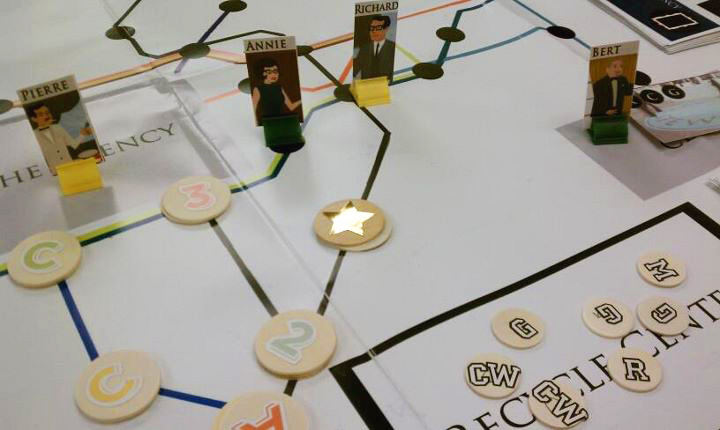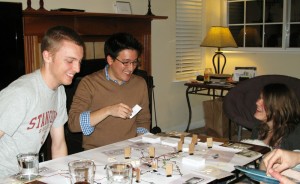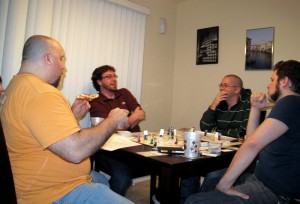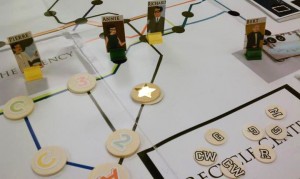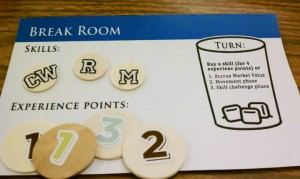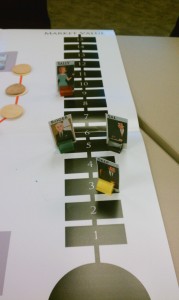In a graduate class on game design and interactive storytelling, I worked with a group of students from the School of Education, department of Telecommunications and the Cognitive Science Program to create a working board game. Our overarching question was: can you create a successful board game that incorporates elements from both strategy and party games? Through rapid prototyping and extensive playtesting, we were able to use both quantitative (measures such as laughs per minute) and qualitative analysis (observation of players and their comments) to confirm that our game was successful–as defined by how much players enjoyed the game and what they would be willing to pay for a personal copy.
In the advertising-based game, called Admen, players attempt to increase their ‘market value’ by answering advertising trivia questions and creative challenges, gaining ‘skills’ that can be used to win clients. Every new client increases a player’s market value—if they have the skills the client needs. Players must decide on each turn where to move, what skills to attempt to gain, and whether to spend resources to get a quick boost—all while keeping track of their competitors.
Read more: Research paper on Admen


